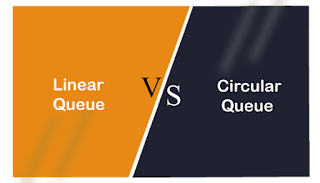Here is a table outlining the differences between a queue and a circular queue:
| Queue | Circular Queue |
|---|---|
| A data structure that follows the FIFO (First-In, First-Out) principle. | A data structure that follows the FIFO principle and uses a circular array to store elements. |
| Elements are added at the rear end of the queue and removed from the front end. | Elements are added at the rear end of the queue and removed from the front end. However, the front and rear end of the queue are connected in a circular manner. |
| When the queue becomes full, it is not possible to add any more elements. | When the queue becomes full, new elements can be added by overwriting the oldest elements in the queue, because the front and rear ends of the queue are connected. |
| It has a fixed size, which means that the maximum number of elements that can be stored is predetermined. | It also has a fixed size, but it can hold more elements than a normal queue of the same size because of the circular nature of the array. |
| It can be implemented using a linked list or an array. | It is implemented using an array. |
| Insertion and deletion operations have a time complexity of O(1) (constant time) in the average case. | Insertion and deletion operations have a time complexity of O(1) (constant time) in the average case. However, if the circular queue is implemented using a fixed-size array, the time complexity of inserting a new element when the queue is full is O(n) (linear time), where n is the size of the array. |
In summary, a circular queue is a variation of a queue that allows efficient use of space by overwriting the oldest elements in the queue when it becomes full, while maintaining the FIFO principle. It is useful in situations where a fixed-size buffer is needed to hold a stream of data, such as in computer networking and operating systems.

